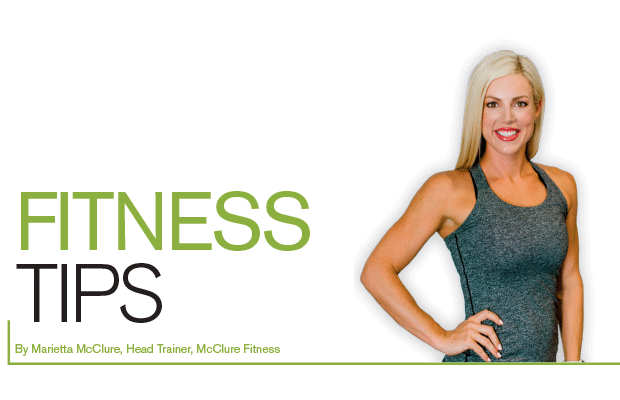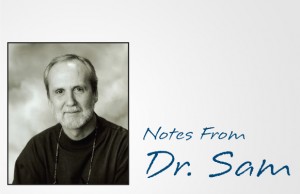Let’s Dig In

If I took an informal survey of the hundreds of people in Saline County and asked them to share their workout goals, the answers would have a common thread. Some keep it simple and just want to lose weight. Some get a little more specific and focus on body weight and want to see fat loss. Others get super detailed and want to see the belly fat, inner thigh fat, arm fat (a.k.a. bat wings), or love handles disappear. This time of the year I especially get more “spot reduction” questions, when summer is less than two months away.
Strange things start to happen when we get tunnel vision on our goals, down to which fat cells we want to go. Workout routines get modified to add more ab, leg, or arm exercises. We target those muscles so furiously, thinking it has to burn fat in no time.
It’s not that simple. There are a ton of myths out there, and targeted fat loss is one of the most popular. This belief stems from a misplacement of mental focus. The good news is you can reach your fitness goals without obsessing over any specific body part.
Can You Really Target Fat Loss To Specific Body Parts?
It’s easy to feed into the claims on social media that you can achieve a flat midsection with a handful of particular workouts. Here’s the hard truth: no amount of sit-ups will manifest six-pack abs. The obsession with perfecting one area of the body without affecting the whole body has to face one simple fact: your body doesn’t work that way.
You must consider the entire body.
For a moment, let’s imagine a full swimming pool. Now I want you to take out a bucket of water from the top left corner, but make sure the water is removed from only that corner. How successful would you be?
Your body works the same way. So, trying to lose fat in one area is futile. I wouldn’t say it is completely impossible, but the difference is on such a micro level that you wouldn’t notice it.
Common spot reduction exercises are ineffective.
Like I said earlier, when you think about reducing body fat in a specific area, the common answer sounds like a no-brainer. Sit-ups and crunches reduce belly fat, right? But, unfortunately, these exercises don’t burn many calories.
Let’s not forget one pound of fat equals 3,500 calories. Thirty minutes of nothing but crunches might burn around 100 calories if you’re lucky. That’s about 17.5 hours worth of crunches to burn one pound of body fat. Even burning that one pound of body fat doesn’t guarantee it will come from your belly!
What To Focus On Instead – Spot Reduction Alternatives
Are you starting to see why they call it stubborn fat? It’s frustrating just thinking about everything you could try and how impossible it seems to get what you really want. This is exactly why you have to break the tunnel vision and see the bigger picture.
You see, you can get a flat midsection and slimmer inner thighs and upper arms. It just takes a different way of thinking about how your body loses fat and resetting your action plan to reach your fitness goals. Here are just a few ways to get started.
Pay attention to body fat percentage.
Instead of only watching the scale or focusing on inches, put it together and monitor body fat percentage. Until you can establish a baseline body fat percentage and work to reduce fat, you won’t see those target areas change. So what’s a realistic goal?
For women, somewhere between 21-24% body fat is considered fit. It does fluctuate by age, but if you’re getting close to this number, chances are you notice toned arms, a tighter stomach, and shapely legs. For men, the range is 14-17% to achieve a fit look.
Strength training helps, but not how you think.
I talk a lot about the importance of building muscle mass and the benefits of strong muscle groups to burn fat. The catch here is that if you focus on only strength training, you will build muscle underneath the layer of fat, making you look bigger. That isn’t the result you are after, is it?
Going back to the whole body approach, consider this. Strength training does increase the total calories you burn 24/7, but cardiovascular exercise burns more calories in a short amount of time. Combine strength training with cardio exercise to take advantage of how your body burns fat throughout the day.
Healthy eating can’t be ignored.
All of this exercise means very little if you aren’t eating healthy. Don’t consider these diet tips—they need to be lifetime eating habits.
Check your portions – From smaller plates to a trained eye, make sure you have a true sense of food portions and stick to what’s sensible.
Limit processed foods – I know they’re often the most convenient, but processed foods like candy, most chips, and fast food will make a huge difference.
Pass on added sugar – It’s mind-blowing how much added sugar sneaks into food and drinks. Pay attention to the labels and skip anything excessive.
Focus on fiber and protein – Both make you feel full and can help with overeating. Fiber-rich foods like vegetables, beans, and fruit should always be on the menu. Lean protein fuels your muscles and keeps calories low.
The Bottom Line
If you want to lose fat in the places you dislike the most, you must stop focusing on the specifics. It takes a whole-body approach to exercise and healthy eating to achieve your desired results. Commit to the process for 3-4 months, and then look back at where you started. You’ll be blown away!










0 comments